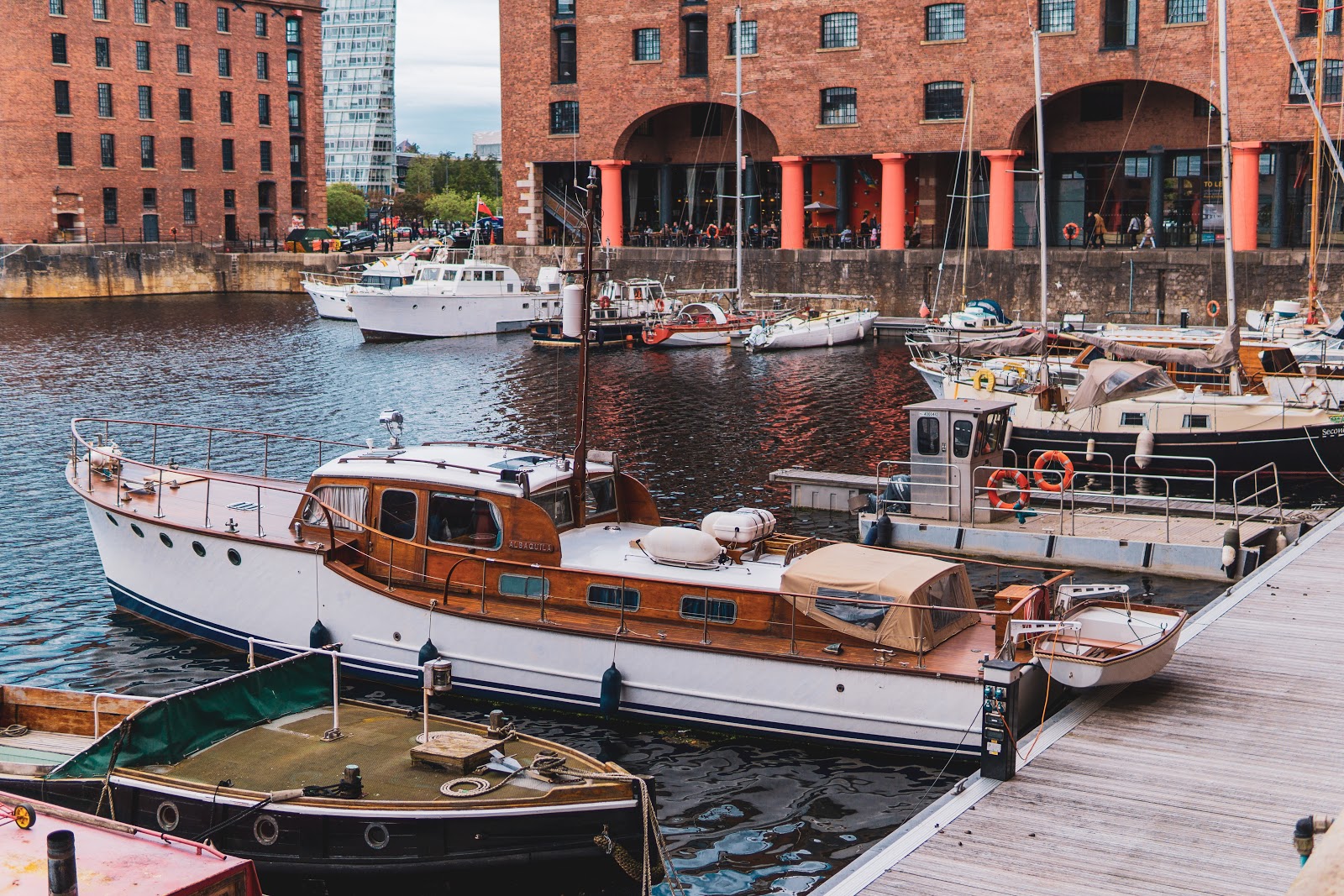Sitting at the junction of the River Mersey and the Irish Sea, Liverpool is a proud Maritime Mercantile city with a fascinating history. One of the world’s major trading centres in the 18th and 19th centuries, Liverpool’s geographical location made it the primary port for the movement of goods to and from North America. Sugar and tobacco came in from the West Indies, and Liverpool was also the centre of mass migration, as Irish people poured into the city to escape the great potato famine, and many British citizens departed from Liverpool to start a new life in North America. Some of the great luxury liners of the 20th century, including the Mauretania and the ill-fated Lusitania, sailed from Liverpool, and during World War II the city was heavily bombed due to its strategic importance.
But in the latter half of the century the city declined as an industrial centre, and the docklands were gradually neglected and abandoned. By the 1970s the docks had become obsolete, and their iconic buildings were at risk of being demolished. Fortunately the Council and other organisations stepped in, and a programme of regeneration began in the 1980s. One of the first beneficiaries of these changing attitudes was Albert Dock, a 21,000 square metre site dating back to 1846. Grade I listed after WWII, the council declared the site a Conservation Area in the 1960s, and after a ten year regeneration and rebuilding, the site opened again in 1988 with a Maritime Museum, the Tate Liverpool, and a host of retail and leisure offerings. Today, the Albert Dock is a UNESCO World Heritage site, and enjoys more than 6 million visitors per year, eager to learn more about the city’s maritime history and to enjoy the range of shops, bars and restaurants.
 Albert Dock, Liverpool, United Kingdom
Albert Dock, Liverpool, United Kingdom
But Albert Dock was just the start. The regeneration of Liverpool’s docklands has continued to this day, and the most exciting development currently on the horizon is Liverpool Waters. This £5.5 billion project aims to redevelop 60 hectares into 1.5 million square metres of floor space, including offices, hotels, residential, leisure and cultural offerings. The residential offering will include three towers with a total of 650 riverside apartments, in the Princes Dock area, and 3,000 new homes in Clarence Dock.
Liverpool’s undersupply of housing, coupled with a growing population and increased demand for homes, ensures that these new developments will be welcomed in the city, and provide excellent returns for investors. Also included in the plans are a new ferry terminal for the Isle of Man, a new stadium for Everton Football Club, and a £50 million cruise liner terminal. This ambitious project is located just north of Liverpool’s Commercial Business District, home to the UK’s fastest growing regional economy outside London, and is next to the Ten Streets Creativity District, already home to performance venues, markets and nightclubs, and set to be a big draw for start-ups, artists, creatives, and the digital and technology sectors.
The areas surrounding Liverpool Waters are also benefitting from this surge in redevelopment, including Stanley Dock, which holds Liverpool’s largest listed structure, Tobacco Warehouse. Situated in the Atlantic Corridor, Stanley Dock is a UNESCO listed World Heritage site. The dock is already home to the Titanic Hotel and Rum Warehouse, winners of multiple awards for regeneration, heritage and operations. Tobacco Warehouse will continue this reinvigoration of the area, with 129 luxury one and two bedroom duplex apartments. These luxury, open-plan residences will include original architectural features, double-height living rooms, and stunning waterside views. With the first units being completed this year, demand is sure to be high for these unique and stunning properties. And with such a proud history, who wouldn’t want to buy their own piece of Liverpool’s waterfront regeneration?

.jpg)




